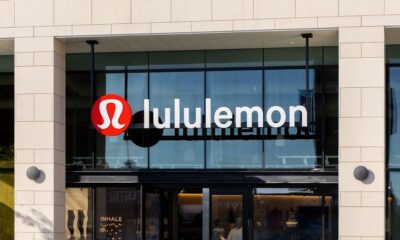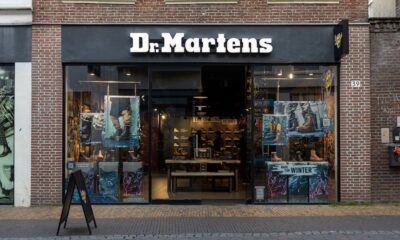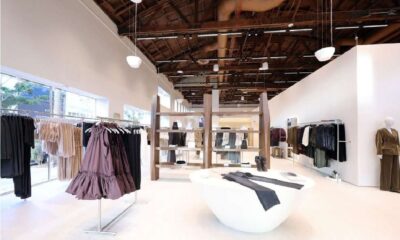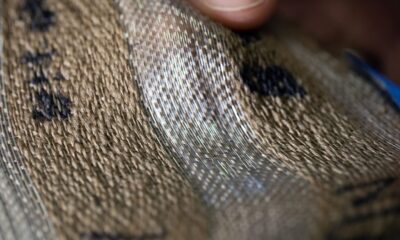Fashion
Israel’s Delta Galil posts $470 mn Q2 sales, updates 2025 guidance

The gross profit climbed 2 per cent to $201.3 million, while gross margin increased by 90 basis points to a second quarter record of 42.8 per cent. The YoY increase in Q2 gross margin was due primarily to positive exchange rates, higher DTC sales and favourable segment mix, partially offset by the US tariff impact and a lower export subsidy in its Egyptian operation, Delta Galil said in a press release.
Delta Galil Industries has reported sales of $470.1 million in stable Q2 2025 despite US tariffs and regional tensions.
DTC sales rose 9 per cent, with record gross margin of 42.8 per cent.
Net income slipped to $16.7 million, while H1 sales grew 5 per cent to $968.8 million.
The company cut full-year guidance but expects to offset tariff pressures through strategic sourcing and its Egypt hub.
However, EBIT declined to $31 million from $37.8 million, weighed by higher marketing costs, expansion of DTC operations, and expenses from integrating the Passionata brand.
The net income for the quarter dropped to $16.7 million from $21 million, while diluted earnings per share (EPS) fell to $0.57 from $0.74.
“Delta delivered solid second quarter financial results despite the challenging US tariff environment this year. Despite the tariff impact, second quarter steady sales demonstrate the strength of our diversified global platform including robust growth in our branded direct-to-consumer channels,” said Isaac Dabah, CEO of Delta Galil. “Our record gross margin in this quarter on a backdrop of tariff uncertainty is a true achievement and a testament to the strength and flexibility of our vertical operating model and the agility of our operating team.”
Meanwhile, for the first half (H1) of 2025, Delta Galil posted sales of $968.8 million, a 5 per cent increase from $922.2 million in the prior-year period. DTC sales grew 12 per cent, underscoring the company’s continued shift towards branded channels.
The gross profit in H1 rose to $403.9 million from $387.9 million, though gross margin rose slightly to 41.7 per cent compared with 42.1 per cent a year earlier. EBIT remained broadly flat at $63.7 million, versus $63.8 million last year, while net income edged up to $34.3 million from $33.1 million. Diluted EPS for H1 stood at $1.18, up from $1.13 in the same period prior year.
For full year 2025, Delta revised its guidance downwards due to tariff headwinds. Sales are now expected in the range of $2.11–2.14 billion, EBIT between $171–176 million, net income of $97–101 million, and diluted EPS of $3.32–3.46.
The company projects tariffs could reduce annual operating income by as much as $22 million but aims to mitigate the impact through strategic sourcing and production shifts, particularly leveraging its Egyptian hub, which benefits from low tariff and duty advantages.
“Going forward, we see opportunity to gain market share due to our strategically located hub in Egypt with low tariff and no duty generating increasing demand from strategic customers,” added Dabah. “We are expanding and streamlining factories in strategic locations, enhancing logistics centers, and expanding our store footprint and e-commerce platform globally. We remain confident in our ability to create value for our shareholders in 2025 and beyond.”
Fibre2Fashion News Desk (SG)
Fashion
Modella makes another acquisition, this time it’s the Wynsors footwear chain
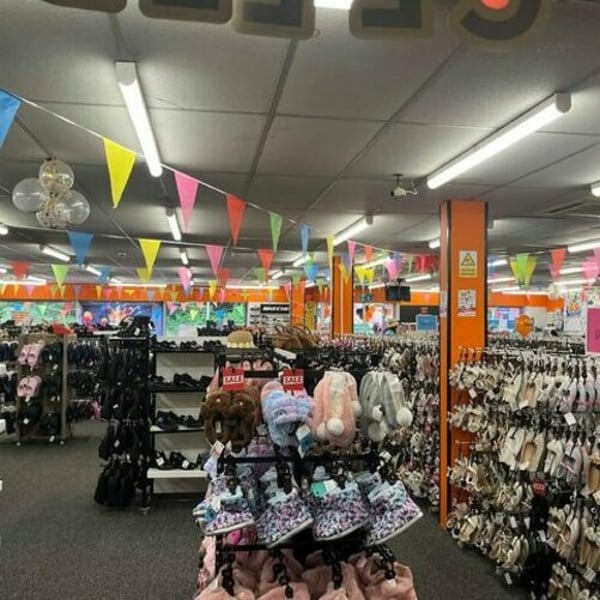
Published
December 1, 2025
Modella Capital is fast becoming one of the most acquisitive businesses on the UK high street and the latest retailer to join its portfolio is footwear chain Wynsors World of Shoes.
The company hadn’t made a formal announcement as we published but a spate of Companies House announcements came through about individuals ceasing to be “a person with significant control” of Wynsors’ parent company or becoming newly appointed directors. Yet the biggest clue that came early evening on Monday was the one that said “Appointment of Modella Capital Directors Limited as a director on 29 November 2025”.
There’s no hint of how much it might have paid for the business.
The story had originally been broken by Sky News on Monday morning, which had said the investment firm was targeting a takeover of the privately owned footwear retailer and was in “advanced talks”.
Wynsors trades from around 50 standalone shops across the north of England and Sky had said Modella was “the likeliest buyer” of the business, with expectations of a deal before the end of the year. Monday’s later developments tore that timeline up completely.
Modella was recently in the news as the buyer of Claire’s UK business. It also recently bought the non-travel locations of WH Smith (now renamed TG Jones) and owns Hobbycraft and The Original Factory Shop too. It had earlier hoped to add Poundland to its portfolio but missed out on that one.
Wynsors had been looking to sell for around two months and accountancy firm RSM had been hired explore interest from prospective bidders, Sky News said.
The chain trades from around 50 standalone stores and 40 concessions. It sells brands including Adidas, Skechers, Hush Puppies, Clarks, Nike, Kickers and more. And although its sells footwear for women, men and children, it focuses particularly on school shoes.
Copyright © 2025 FashionNetwork.com All rights reserved.
Fashion
Eastpak appoints Marie Gras as vice president, global brand

Published
December 1, 2025
A running specialist is all set to drive growth in Eastpak‘s bags business. VF Corp’s luggage brand, a major player in the backpack market in France and across Europe, has appointed a new global brand vice president. Marie Gras, who has served as vice president for running at the French sporting-goods giant Decathlon for nearly two and a half years, is leaving Hauts-de-France to join VF Corp’s Antwerp offices. From Belgium, the group operates Eastpak as well as Kipling (led by Domitille Parent, who previously headed Eastpak).
For Marie Gras, a first challenge looms with last weekend’s reopening of an Eastpak flagship on London’s Carnaby Street. The store is located at 35 Carnaby Street and spans two floors. The brand opened its first-ever store on the London thoroughfare in 2008, in a 170-square-metre space.
Marie Gras helped implement Decathlon’s recent running strategy, in one of the world’s fastest-growing sports. Through its dedicated running brand, Kiprun, Decathlon has launched a running app and, notably, formed agreements with partners in new territories to develop Kiprun spaces beyond its own Decathlon stores. Previously, the executive spent almost eight years at Adidas, most recently overseeing the brand’s activities and events in Paris, one of the key cities in the brand’s global visibility strategy.

Eastpak is one of the luggage brands owned by the VF Corp group, which is currently streamlining its operations. The group also owns Kipling, to which it has given fresh momentum in recent months, as well as JanSport, focused on the US market. Eastpak, which benefits from numerous collaborations with designers and mass-market licences, such as Diesel and Gremlins, was founded in 1952 under the name Eastern Canvas Products. In France and Western Europe, it holds a key position among lower- and upper-secondary students. However, across the functional backpack category as a whole (excluding hiking backpacks), the French brand Cabaïa has gained market share in recent years and now claims category leadership in France.
For Eastpak, the challenges are therefore to scale up its entire bags and luggage range and to strengthen its competitiveness against emerging European players in various markets, such as Rains, Ucon Acrobatics, Qwstion, Kapten & Son, Tucano, Ferrino, Ecoalf, Lefrik, and Sandqvist.
This article is an automatic translation.
Click here to read the original article.
Copyright © 2025 FashionNetwork.com All rights reserved.
Fashion
UK budget mildly deflationary; debt to climb past 106%: Fitch
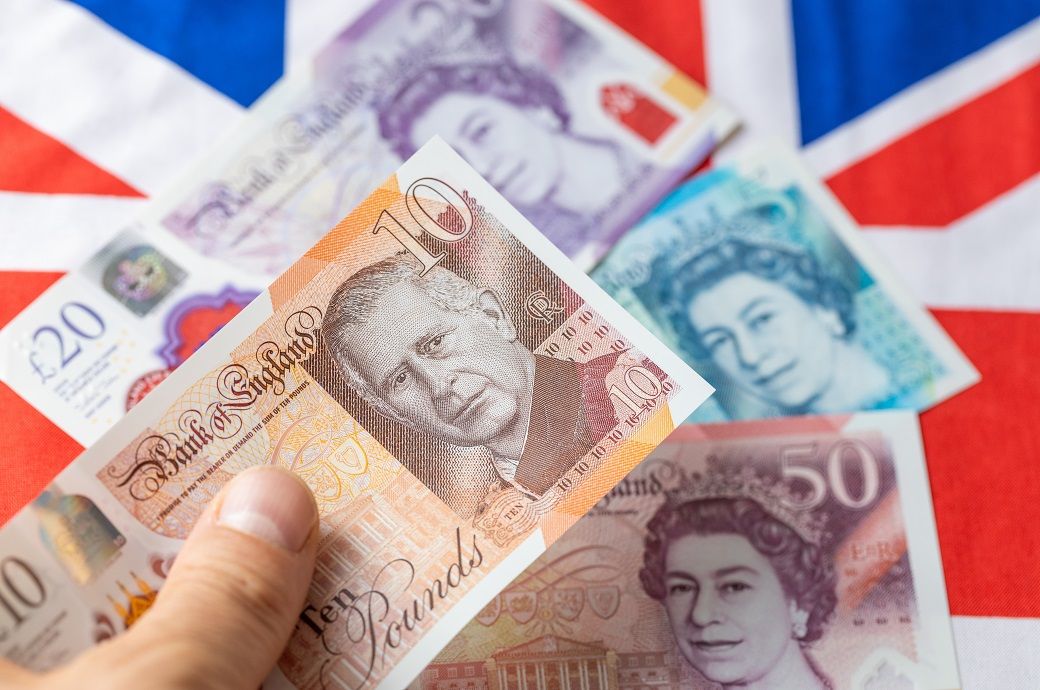
The rating agency said the government’s latest fiscal package is broadly in line with projections made when it affirmed the UK at ‘AA-’/Stable in August but said that the path to consolidation is becoming more challenging.
Fitch Ratings has deemed the budget marginally deflationary, sees debt rising above 106 per cent of GDP by 2027.
The agency said the UK budget broadly aligns with its August deficit projections but signals of rising implementation risks due to back-loaded tax measures and tight spending plans.
New taxes total £26 billion (~$34.37 billion) by FY29, while social spending rises further.
Fitch said the budget’s new tax measures represent £26 billion (~$34.37 billion), or 0.7 per cent of GDP, by fiscal 2029 (FY29), with threshold freezes contributing £8 billion (~$10.57 billion). New Office for Budget Responsibility (OBR) data show general government net borrowing projections 0.2 percentage points (pp) higher on average in 2026–2028 than in March, before falling 0.2 points in 2029, Fitch Ratings said in a release.
Fiscal data since summer remain broadly in line with Fitch’s forecast for the general government deficit to narrow by 0.6 pp in 2025 to 5.3 per cent of GDP and then to 4.4 per cent in 2027, around 0.7 points slower than the government’s new targets.
The agency highlighted material uncertainty around implementation, particularly given the challenging expenditure consolidation outlined in June’s Spending Review, which the budget largely preserves. Real-terms public-sector current spending growth has been tightened further in FY29 to zero, averaging 1.2 per cent in FY26–FY28 compared with 3.4 per cent in FY24–FY25.
Fitch noted that many tax measures are highly back-loaded, coming into effect closer to mid-2029, the latest possible timing of the next general election. A large portion of the tax plan also consists of numerous smaller measures, making the overall impact less transparent than the broader income tax rise the government signalled before the budget. Options to raise further revenue are politically constrained by 2024 election pledges not to increase personal income tax, VAT or National Insurance.
Still, Fitch said Chancellor Rachel Reeves is demonstrating firmer commitment to the fiscal rule than recent predecessors. Last year’s decision to shorten the rolling forecast horizon from five to three years from 2026 has reduced the scope to delay real fiscal adjustment. Aligning fiscal plans more closely with three-year spending reviews also makes it harder to rely on unrealistic spending cuts to fill fiscal gaps.
Budget headroom has increased from £12 billion to £22 billion, around 0.6 per cent of GDP, but Fitch said this remains limited and constrains efforts to improve policy predictability.
Revenue projections have been reshaped by a £16 billion downgrade in expected tax receipts due to lower OBR productivity assumptions, reducing average GDP growth in 2026–2029 by 0.3 pp to 1.5 per cent. Upward revisions to inflation and wage growth more than offset this decline. The OBR’s updated medium-term GDP growth outlook is now closer to Fitch’s trend estimate of 1.4 per cent, of which total factor productivity contributes only 0.3 points.
Although sustained high nominal gilt yields represent a significant fiscal risk, the UK’s long average debt maturity of 13.7 years helps contain projected debt-interest requirements, which Fitch expects to rise modestly to 7.4 per cent of revenue in 2027 from 7 per cent in 2024.
Fitch projects modest GDP outperformance in the near term compared with its August forecast of 1.2 per cent for 2025, although a weakening labour market poses a small downside risk to its 1.2 per cent projection for 2026. The agency judges the budget as marginally deflationary and expects inflation to fall to 2.4 per cent by end-2026.
Fibre2Fashion News Desk (HU)
-

 Sports1 week ago
Sports1 week agoWATCH: Ronaldo scores spectacular bicycle kick
-

 Entertainment1 week ago
Entertainment1 week agoWelcome to Derry’ episode 5 delivers shocking twist
-

 Politics1 week ago
Politics1 week agoWashington and Kyiv Stress Any Peace Deal Must Fully Respect Ukraine’s Sovereignty
-

 Business1 week ago
Business1 week agoKey economic data and trends that will shape Rachel Reeves’ Budget
-

 Tech6 days ago
Tech6 days agoWake Up—the Best Black Friday Mattress Sales Are Here
-

 Politics1 week ago
Politics1 week ago53,000 Sikhs vote in Ottawa Khalistan Referendum amid Carney-Modi trade talks scrutiny
-

 Fashion1 week ago
Fashion1 week agoCanada’s Lululemon unveils team Canada kit for Milano Cortina 2026
-

 Tech1 day ago
Tech1 day agoGet Your Steps In From Your Home Office With This Walking Pad—On Sale This Week


